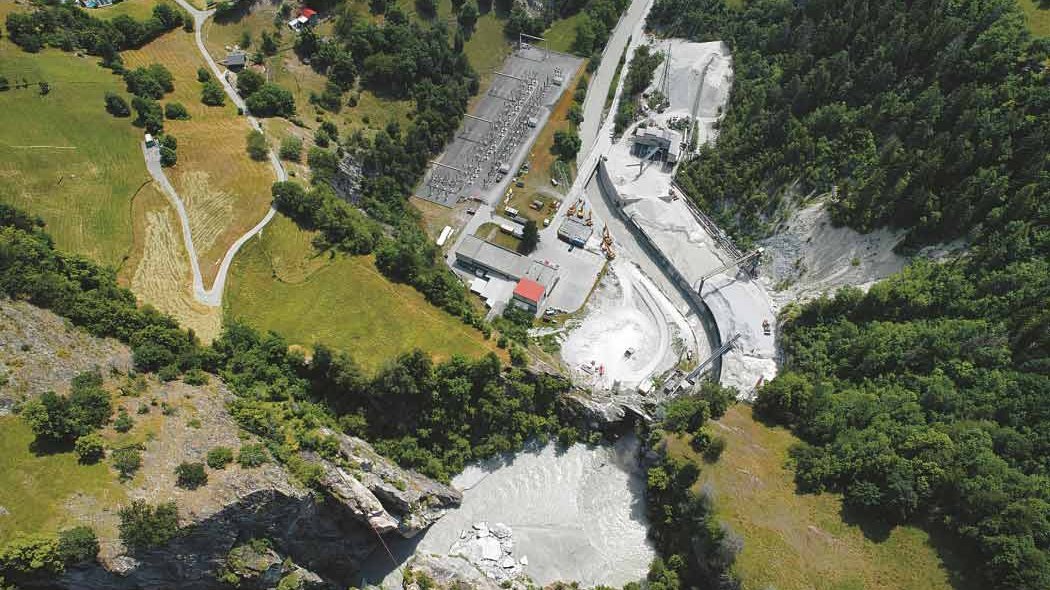Scenario of a blackout in Switzerland
The power failure on the Iberian Peninsula has made headlines in recent days. Would such a scenario also be conceivable for Switzerland, and how would the electricity grid be stabilised again? Alpiq’s special Electra Massa power plant in Valais is one of the few that can restart the electricity grid. Romain Birbaum, head of the team that includes Alpiq’s central control centre, which controls the power plants, answered a few questions.
Romain, is it conceivable that Switzerland could also experience a complete blackout like what has happened in Spain and Portugal in recent days?
20 years ago, on 18 January 2005, I had just started at Alpiq and a similar situation occurred. At that time, lightning struck near Geneva and caused a large-scale power failure affecting much of the region between Geneva and Lausanne. So, in theory, yes. Even today, a power failure that affects either the entire electricity grid or a large part of the grid in Switzerland can never be completely ruled out. In practice, however, we are very well protected and prepared.
Why is it so difficult to restart an electricity grid from a complete blackout?
I often compare the European electricity grid to a large ship that is very stable in the face of external influences and fluctuations. In the event of a complete power failure, a complete blackout, the grid is restored by small islands similar to small boats. When that happens, the production and the load must be reconnected step by step. The grid frequency must be kept constant at 50 Hertz – this is only possible if production and consumption are in balance. If the imbalance is too great, the ship capsizes, and you have to start again. Therefore, it is a task that should not be underestimated, and it is not like flicking a switch on the fuse box at home.
What measures would be introduced in Switzerland in this case?
We work with Swissgrid to regularly conduct drills and training sessions that run through a wide range of fault scenarios. However, we also have protective systems that minimise the effects of a failure by isolating the “defective” part in the system. In most cases where a part of the electricity grid is still in operation – i.e. there is no complete blackout – the grid is restored by reconnecting lines from the “healthy” area. The power plants and consumers are gradually reconnected in a coordinated manner. After all, the challenge is to balance consumption and production as well as possible.
Is there a system for this that we use in Switzerland?
Swissgrid has defined four zones in Switzerland: “Centre”, “East”, “West” and “South”. This is to ensure that the grid is rebuilt in an emergency. Each of these parts has at least one power plant that would be started in the “dark”, i.e. without external supply from the local distributor, and would operate in “island mode”, i.e. for itself. These power plants are tested regularly. This ensures that the grid can be restored even in the event of a complete failure of the European electricity grid.
In the event of a blackout in Switzerland, Alpiq would be responsible for ramping up energy in the “West” region with its Electra Massa power plant. How exactly would that work?
In the event of a blackout, Alpiq would ask its local colleagues to start up the Electra Massa power plant and connect a load of around 20 MW. Swissgrid will then take on the task of coordinating the restoration of the grid, the synchronisation of the zones and the gradual re-establishment of the link between production and consumption with the other players. We have a mandate from Swissgrid as the Grid Reconstruction Manager of “Zelle West”.

About the person
Romain Birbaum has been Head of Grid, OT & System Management at Alpiq since 2020. In this role, he is responsible for the team that includes the control centre, which manages and monitors Alpiq’s power production. The dispatching staff also work 24/7 – even at night and on weekends – to ensure a reliable and efficient electrical power supply. Romain, who holds a degree from EPFL, has held various management positions at Alpiq in Lausanne since 2003.

What capabilities does a power plant selected for this need to have to be able to restart the electricity grid in an emergency?
This is referred to in technical jargon as an “ancillary service”. In order to do justice to this ancillary service, we must have a control panel that can start autonomously – i.e. without an external distribution grid – and can also be operated as an “island” in an isolated grid. These are the two key criteria. Electra Massa can do both.
